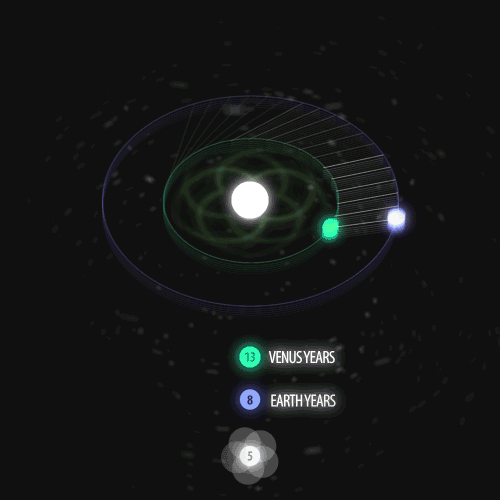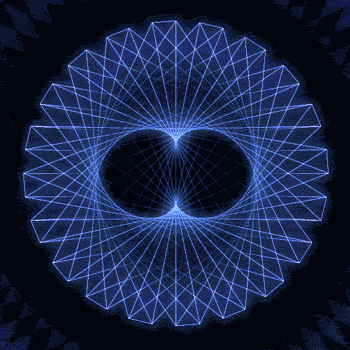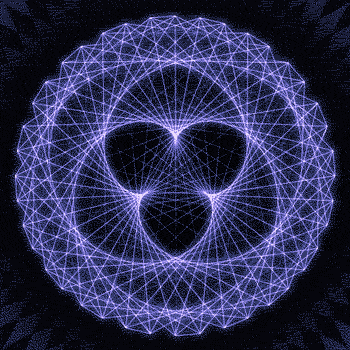Biochemists At The University Of California San Diego Have Developed Artificial Cell Membranes That Grow

Biochemists at the University of California San Diego have developed artificial cell membranes that grow and remodel themselves in a manner similar to that of living mammalian cells.
The achievement, detailed in a paper published in this week’s issue of the Proceedings of the National Academy of Sciences, follows the successful design last year in the same laboratory of artificial, or synthetic, cell membranes capable of sustaining continual growth. The two developments now bring the researchers closer to mimicking all of the properties of living mammalian cell membranes with synthetic components.
That’s important because synthetic membranes that accurately mimic the behavior of living mammalian cell membranes could be used by biomedical researchers to develop more effective drugs that target membrane proteins and better understand the chemical changes that occur in dysfunctional membranes during disease.
“While artificial membranes have been used to model the properties of native membranes, previous methods have not been able to mimic lipid membrane remodeling,” said Neal Devaraj, an associate professor of chemistry and biochemistry at UC San Diego who headed the research team for both studies. “In our latest study, we show that reversible chemical reactions can be harnessed to achieve spontaneous remodeling of lipids in synthetic membranes.”
Continue Reading.
More Posts from Sciencephysics4all-blog and Others
Juno: Inside the Spacecraft

Our Juno spacecraft was carefully designed to meet the tough challenges in flying a mission to Jupiter: weak sunlight, extreme temperatures and deadly radiation. Lets take a closer look at Juno:
It Rotates!

Roughly the size of an NBA basketball court, Juno is a spinning spacecraft. Cartwheeling through space makes the spacecraft’s pointing extremely stable and easy to control. While in orbit at Jupiter, the spinning spacecraft sweeps the fields of view of its instruments through space once for each rotation. At three rotations per minute, the instruments’ fields of view sweep across Jupiter about 400 times in the two hours it takes to fly from pole to pole.
It Uses the Power of the Sun

Jupiter’s orbit is five times farther from the sun than Earth’s, so the giant planet receives 25 times less sunlight than Earth. Juno will be the first solar-powered spacecraft we’ve designed to operate at such a great distance from the sun. Because of this, the surface area of the solar panels required to generate adequate power is quite large.

Three solar panels extend outward from Juno’s hexagonal body, giving the overall spacecraft a span of about 66 feet. Juno benefits from advances in solar cell design with modern cells that are 50% more efficient and radiation tolerant than silicon cells available for space missions 20 years ago. Luckily, the mission’s power needs are modest, with science instruments requiring full power for only about six out of each 11-day orbit.
It Has a Protective Radiation Vault

Juno will avoid Jupiter’s highest radiation regions by approaching over the north, dropping to an altitude below the planet’s radiation belts, and then exiting over the south. To protect sensitive spacecraft electronics, Juno will carry the first radiation shielded electronics vault, a critical feature for enabling sustained exploration in such a heavy radiation environment.
Juno Science Payload:
Gravity Science and Magnetometers – Will study Jupiter’s deep structure by mapping the planet’s gravity field and magnetic field.

Microwave Radiometer – Will probe Jupiter’s deep atmosphere and measure how much water (and hence oxygen) is there.

JEDI, JADE and Waves – These instruments will work to sample electric fields, plasma waves and particles around Jupiter to determine how the magnetic field is connected to the atmosphere, and especially the auroras (northern and southern lights).
JADE and JEDI

Waves

UVS and JIRAM – Using ultraviolet and infrared cameras, these instruments will take images of the atmosphere and auroras, including chemical fingerprints of the gases present.
UVS

JIRAM

JunoCam – Take spectacular close-up, color images.

Follow our Juno mission on the web, Facebook, Twitter, YouTube and Tumblr.
Make sure to follow us on Tumblr for your regular dose of space: http://nasa.tumblr.com





Fibonacci you crazy bastard….
As seen in the solar system (by no ridiculous coincidence), Earth orbits the Sun 8 times in the same period that Venus orbits the Sun 13 times! Drawing a line between Earth & Venus every week results in a spectacular FIVE side symmetry!!
Lets bring up those Fibonacci numbers again: 1, 1, 2, 3, 5, 8, 13, 21, 34..
So if we imagine planets with Fibonacci orbits, do they create Fibonacci symmetries?!
You bet!! Depicted here is a:
2 sided symmetry (5 orbits x 3 orbits)
3 sided symmetry (8 orbits x 5 orbits)
5 sided symmetry (13 orbits x 8 orbits) - like Earth & Venus
8 sided symmetry (21 orbits x 13 orbits)
I wonder if relationships like this exist somewhere in the universe….
Read the Book | Follow | Hi-Res -2- -3- -5- -8-


Merry Christmas with geometry!

- Excuse me. For the fractal geometry? - At the end of the corridor.


A ferrofluid clock #sciphy4all #science #physics #ferrofluid #clock

Thermal Processes with Ideal Gas
The history of Hubble - Η ιστορία του διαστημικού τηλεσκοπίου που έχει γράψει ιστορία με τις φωτογραφίες του, Hubble.
Can You #SpotHubble?
Hey Tumblr! We’re Inviting You to #SpotHubble

Since its launch in 1990, the Hubble Space Telescope has sent back mind-blowing images that not only changed our understanding of our universe, but also changed where we see our universe.

Hubble is more than a science instrument; it’s a cultural phenomenon! Take a moment to think about where you’ve seen the Hubble Space Telescope or Hubble images in your daily life.

Maybe you walk by a mural inspired by Hubble images everyday on your way to work.

Perhaps you’ve even created art based on Hubble images.

We want to see the Hubble impact in your life! Share your photos with us on Instagram, Twitter, Flickr and Facebook. If a #SpotHubble image catches our eye, we may share your post on our NASA Hubble social media accounts.

Here’s how to #SpotHubble!
There are four social media platforms that you can use to submit your work:
Flickr: Submit your photos to the Spot Hubble Flickr Group
Instagram: Use the Instagram app to upload your photo, and in the description include #SpotHubble and #NASAGoddard
Twitter: Share your image on Twitter and include #SpotHubble in the tweet
Facebook: Share your image on Facebook and include #SpotHubble in the post
Please note, submissions are subject to certain terms and conditions.
Make sure to follow us on Tumblr for your regular dose of space: http://nasa.tumblr.com
-
 cristian-randieri liked this · 8 years ago
cristian-randieri liked this · 8 years ago -
 llcnsnnts reblogged this · 8 years ago
llcnsnnts reblogged this · 8 years ago -
 chokingonfeelings liked this · 8 years ago
chokingonfeelings liked this · 8 years ago -
 mjthetransguy2-blog reblogged this · 8 years ago
mjthetransguy2-blog reblogged this · 8 years ago -
 dammar liked this · 8 years ago
dammar liked this · 8 years ago -
 biancamariaxx reblogged this · 8 years ago
biancamariaxx reblogged this · 8 years ago -
 biancamariaxx liked this · 8 years ago
biancamariaxx liked this · 8 years ago -
 milesaway420-blog reblogged this · 8 years ago
milesaway420-blog reblogged this · 8 years ago -
 dreamawhile reblogged this · 8 years ago
dreamawhile reblogged this · 8 years ago -
 ulyssesfl liked this · 8 years ago
ulyssesfl liked this · 8 years ago -
 50shades-of-blue liked this · 8 years ago
50shades-of-blue liked this · 8 years ago -
 xambonie reblogged this · 8 years ago
xambonie reblogged this · 8 years ago -
 spice-melange reblogged this · 8 years ago
spice-melange reblogged this · 8 years ago -
 spice-melange liked this · 8 years ago
spice-melange liked this · 8 years ago -
 todd-the-foxx liked this · 8 years ago
todd-the-foxx liked this · 8 years ago -
 blueberryxream liked this · 8 years ago
blueberryxream liked this · 8 years ago -
 watchforthebluebox reblogged this · 8 years ago
watchforthebluebox reblogged this · 8 years ago -
 king-of-the-aces liked this · 8 years ago
king-of-the-aces liked this · 8 years ago -
 kst4r reblogged this · 8 years ago
kst4r reblogged this · 8 years ago -
 kst4r liked this · 8 years ago
kst4r liked this · 8 years ago -
 angrybisexual reblogged this · 8 years ago
angrybisexual reblogged this · 8 years ago -
 gallivantinggalaxies liked this · 8 years ago
gallivantinggalaxies liked this · 8 years ago -
 sciencemouse liked this · 8 years ago
sciencemouse liked this · 8 years ago -
 lhachia reblogged this · 8 years ago
lhachia reblogged this · 8 years ago -
 lhachia liked this · 8 years ago
lhachia liked this · 8 years ago -
 thesmrtscience reblogged this · 8 years ago
thesmrtscience reblogged this · 8 years ago -
 powerpuff-dyke reblogged this · 8 years ago
powerpuff-dyke reblogged this · 8 years ago -
 sciencephysics4all-blog reblogged this · 8 years ago
sciencephysics4all-blog reblogged this · 8 years ago -
 doomroar liked this · 8 years ago
doomroar liked this · 8 years ago -
 lizasaurusflex reblogged this · 8 years ago
lizasaurusflex reblogged this · 8 years ago -
 baby-serpentine liked this · 8 years ago
baby-serpentine liked this · 8 years ago -
 mc-reg liked this · 8 years ago
mc-reg liked this · 8 years ago -
 anaimatz-blog liked this · 8 years ago
anaimatz-blog liked this · 8 years ago -
 astridberfjord liked this · 8 years ago
astridberfjord liked this · 8 years ago -
 wermcritter liked this · 8 years ago
wermcritter liked this · 8 years ago -
 bedazzled-bandit-ban liked this · 8 years ago
bedazzled-bandit-ban liked this · 8 years ago -
 bumblegump liked this · 8 years ago
bumblegump liked this · 8 years ago -
 hitchhikersguidetothemultiverse liked this · 8 years ago
hitchhikersguidetothemultiverse liked this · 8 years ago -
 samantha-heredia823 liked this · 8 years ago
samantha-heredia823 liked this · 8 years ago

